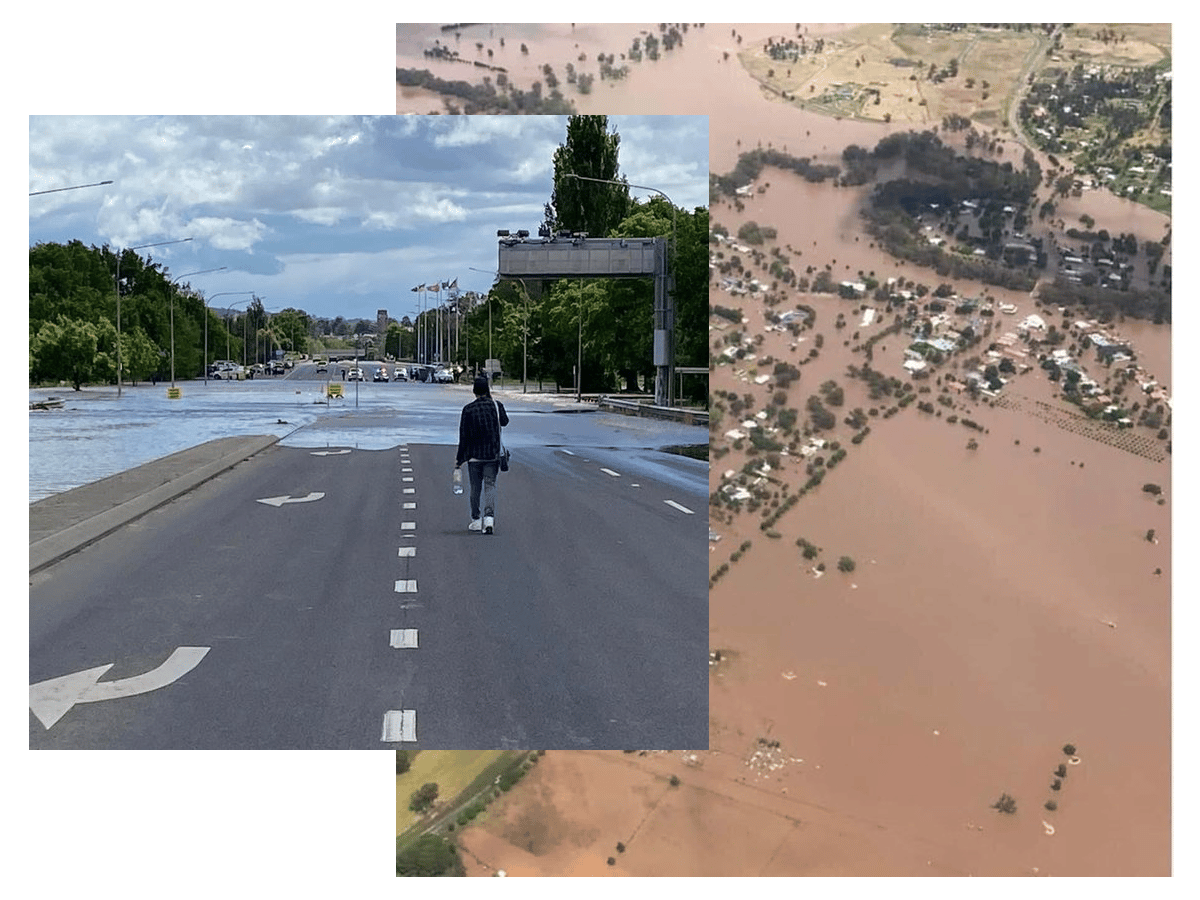
I was in the Northern Rivers area earlier this year, at the time of the record-breaking floods. Seeing the images of a very similar situation taking place in Central West NSW is heartbreaking to watch. It doesn’t feel so long ago that my IG stories shifted dramatically from friends using the platform to document positive, aesthetic and enjoyable parts or their life, to the platform being used as a lifeline through which to ask for help, connect to friends and family and incredulously document their flooded homes and sullied possessions.
While the downpour is still streaming, we remind people to stay vigilant and keep updated. Emergency service minister, Steph Cook reports that more than 70 LGAs in NSW are in a state of natural disaster. This declaration comes off the back of 65 straight days of flooding in the area.
As of today, the Lachlan river is expected to hit a major flood peak hovering at 10.68 metres, equalling the town's highest flood in 1952. The SES has called in specialist flood rescue workers from Singapore to assist the rural communities. The Bureau of Meteorology says the Lachlan River peak could remain throughout the weekend.
Why is this happening?
There are three main drivers for why these areas are experiencing such intense flooding.
Climate Drivers – La Niña
La Nina heightens the risk of flooding as it contributes to background rainfall. La Nina is expected to peak in November and decay as the summer months progress. La Nina should ease up by mid-February.
Saturated soils and variable rainfall
Full dams and saturated soils from consecutive years of La Nina mean that the landscape has a decreased ability to absorb more water.
Climate Change
As the planet is heating up, the atmosphere can absorb more moisture. If that water falls down, it means increased volumes of water spilling out. Rainfall is intensifying by 7% for each additional degree of global heating. Dams are also facing a bigger risk of failing.
The Bureau of Metrology is a great resource to stay updated.
How much water is spilling out?
The Wyangala Dam is reaching new records, currently, there is 230,000 megalitres spilled per day. This is posing serious dangers to the communities in the central west of NSW and especially affecting those near the Lachlan River.
How can I help?
At this stage of the floods, where people are still posting pictures of the floodwater surging outside their homes, it is important to check in with the people on the ground and ask what they need. It could be that reaching out and asking people directly over social media or via a phone call is the most help you can offer.
The Federal Government has announced financial assistance for those affected by the NSW floods. This can be accessed through the services Australia website. The website also provides access to information about how to prepare for flooding in your region. Remember to stay safe and never risk driving through flooded roads. Flood waters can be deceiving and unpredictable.
Donate and volunteer
If you are in Forbes here are some ways you can help
Orange Ex-services Club: You can drop off the specified items wanted below, or call (02) 6362 2666 to make a donation towards vouchers for those in need.
Regional Development Australia: Here you will find an extensive list of grants you or your business might be eligible for
The NSW SES is an invaluable support to flood-affected communities right now.
They are community-based and non for profit, meaning that donating to them is tax deductible. On their website, you will find how you can make a donation that could help the people in need right now.
You can also help by volunteering with them.
Another vital community service that goes above and beyond during natural disasters.
As the floods progress, we will be sure to keep you updated with ways that you can support the community.



